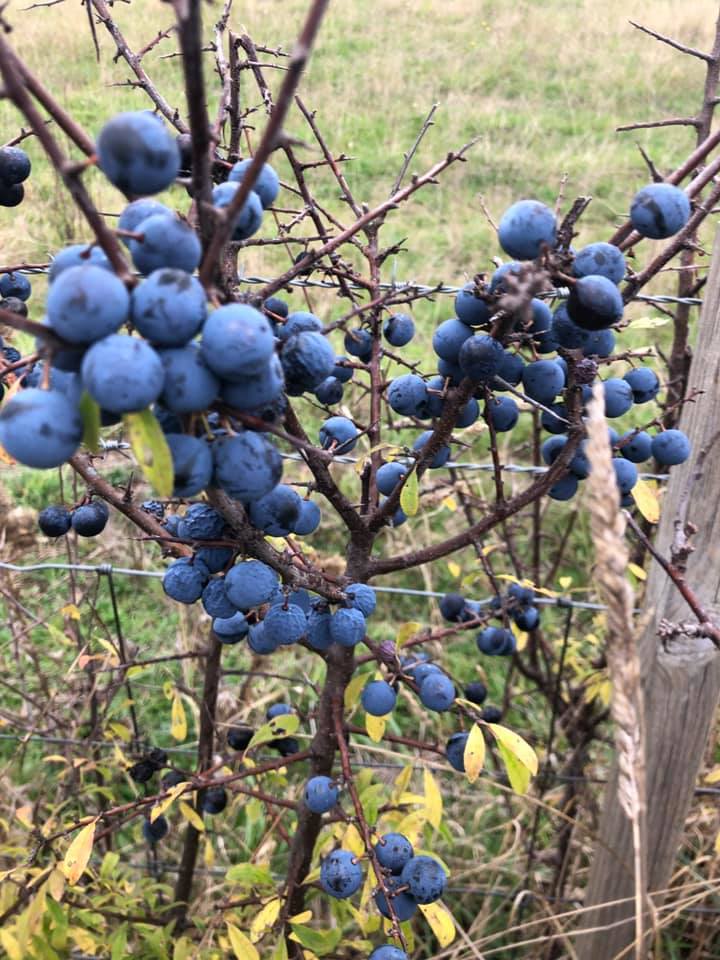Every plant has a story to tell, and Prunus spinosa, commonly known as blackthorn or sloe, is no exception. This ancient shrub boasts a rich and fascinating origin story that spans centuries and continents. In this section, we'll embark on a journey back in time to explore the origins and historical significance of Prunus spinosa, uncovering its roots and understanding how it became an integral part of human culture and nature.
- Native Habitat and Geographic Spread:
Prunus spinosa is believed to have originated in Europe and Western Asia, where it thrives in various habitats, including woodlands, hedgerows, and rocky slopes. The shrub's ability to tolerate different environmental conditions contributed to its widespread distribution across the continents over time.
- Early Uses by Ancient Civilizations:
The history of blackthorn traces back to ancient civilizations, where it found its way into the lives of early inhabitants. Some evidence suggests that ancient Egyptians and Greeks utilized blackthorn for medicinal purposes. The shrub's astringent and soothing properties made it a valuable resource for treating ailments and promoting wellness.
- Folklore and Cultural Significance:
Throughout history, Prunus spinosa has been deeply intertwined with folklore and cultural traditions. In Celtic mythology, blackthorn was associated with the changing seasons and the transition from winter to spring. The appearance of its delicate white blossoms in early spring marked the end of the cold season and heralded the arrival of new life.
In some cultures, blackthorn was regarded as a protective plant, believed to ward off evil spirits and bad luck. The thorny branches of the shrub were sometimes used in rituals and celebrations to symbolize resilience and protection.
- Migration and Dispersal:
As civilizations expanded and populations migrated, so did the blackthorn. Its berries were consumed by birds, which helped disperse its seeds to new territories. This natural process of seed dispersal contributed to the plant's presence in diverse regions and its adaptation to various climates.
- Adoption in New Lands:
The versatility of Prunus spinosa led to its adoption in new lands as people recognized its many uses. As human societies evolved, the shrub found its place in traditional medicine, culinary practices, and even in the crafting of tools and objects.
- Cultural References:
The story of blackthorn has not been confined solely to botanical records; it has made appearances in literature, art, and folklore across different cultures. In European literature, blackthorn is often mentioned in poems, songs, and fairy tales, weaving its presence into the fabric of storytelling and imagination.
Exploring the Many Uses of Blackthorn:
Prunus spinosa, or blackthorn, is a deciduous shrub native to Europe and Western Asia. It belongs to the Rosaceae family and is well-known for its striking appearance and its multiple uses in various aspects of human life. From traditional medicine to culinary delights, blackthorn has been a valuable plant throughout history. In this section, we'll delve into some of the primary uses of Prunus spinosa and the fascinating ways in which it has influenced culture and lifestyle.
- Medicinal Properties:
Blackthorn has a long history of use in traditional medicine, dating back centuries. The shrub's bark, leaves, and fruits contain valuable compounds with potential medicinal benefits. One of the most well-known uses is for the treatment of gastrointestinal issues. The bark and leaves have been used to create infusions or tinctures to alleviate diarrhea and stomach cramps.
Furthermore, the fruits of Prunus spinosa, known as sloes, are rich in antioxidants, vitamins, and minerals. These small, dark purple berries are traditionally used to make herbal remedies, tonics, and even jams. Sloe-based products are believed to strengthen the immune system, improve circulation, and promote overall well-being.
- Culinary Delights:
Sloes, despite their tartness, are highly prized in the culinary world. They are a key ingredient in the production of sloe gin, a popular and flavorful alcoholic beverage. The berries are often harvested after the first frost, as this enhances their flavor and sweetness. When combined with gin and sugar, the result is a delightful liqueur with a unique balance of bitterness and sweetness.
Additionally, Prunus spinosa blossoms in early spring, boasting clusters of beautiful white flowers. These blossoms are not only visually appealing but also have culinary potential. In some regions, blackthorn flowers are used to infuse syrups, honey, or vinegar, imparting a delicate almond-like flavor to various dishes.
- Wildlife Benefits:
The blackthorn shrub plays a vital role in supporting wildlife. The dense and thorny branches provide excellent nesting sites and shelter for birds, such as thrushes and blackbirds. The sloe berries serve as a valuable food source for numerous animals, including birds, small mammals, and insects. As a result, blackthorn contributes to biodiversity and helps maintain ecological balance in its natural habitat.
- Traditional Crafts:
Beyond its medicinal and culinary uses, blackthorn has also been an essential material in traditional crafts. The dense, hard wood of the shrub has been employed to create walking sticks, tool handles, and even pipes. The thorny branches were historically used as fencing material, providing natural barriers for livestock and land boundaries.
Conclusion:
Prunus spinosa, or blackthorn, continues to captivate us with its many applications and its deep-rooted connections to human culture. From its healing properties in traditional medicine to the delightful culinary creations it offers, and its contribution to wildlife and craftsmanship, blackthorn remains a versatile and cherished plant in our lives. As we cherish its past uses, we must also nurture and preserve this invaluable species for the generations to come, ensuring its continued benefits for both people and nature alike.

